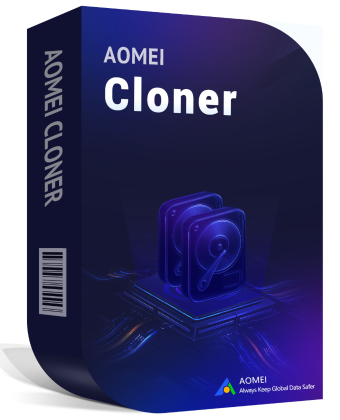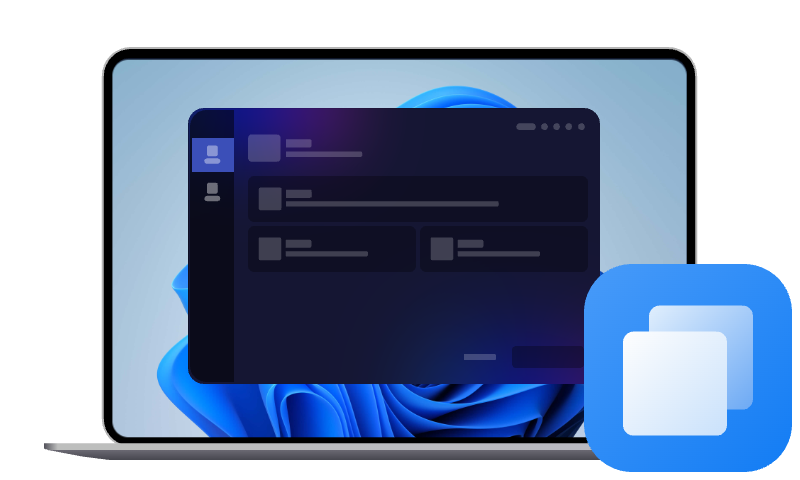Rescuezilla vs Clonezilla: Key Differences and Usage (Alternative)
Trying to choose between Rescuezilla and Clonezilla for disk cloning? Explore their key differences, advantages, and which one best fits your needs.
When it comes to open-source disk cloning tools, Clonezilla and Rescuezilla reign supreme. Both offer powerful cloning features, system backups, and partition imaging. But they serve slightly different users.
Then, which one is right for you? In this guide, we'll cover the key differences between Rescuezilla vs Clonezilla, pros and cons, cloning process, etc. to help your decision. Or try easier alternative to Rescuezilla or Clonezilla.
Rescuezilla vs Clonezilla: Which Is Better?
Confused between Rescuezilla vs Clonezilla? Here we’ll introduce the key differences, pros & cons between them in the following charts:
🎯Key differences between Rescuezilla vs Clonezilla:
|
Feature |
Rescuezilla |
Clonezilla |
|
User Interface |
Intuitive, point-and-click user interface(GUI) |
Text-based, command-line, require more technical knowledge |
|
Installation |
No installation needed; run from USB stick or CD-ROM
|
No installation needed; run from USB stick or CD-ROM
|
|
Feature |
Basic imaging (with compression), backup and restore, cloning, partitioning, etc |
Advanced imaging, cloning, partitioning (e.g. MBR, GPT, resize, move), mass cloning, etc. |
|
File Systems |
common file systemslike NTFS, FAT32, ext4, etc. |
20+ file systems, including Btrfs, XFS, etc. |
|
Fully interoperable |
Work with all backup formats made by Clonezilla, including mounting images and accessing files without login |
Limited |
|
Advanced Features |
Limited |
Multicasting, BitTorrent, scripting, unattended mode, etc. |
|
Target Audience |
General users, beginners |
IT professionals, advanced users |
|
Best for |
Users seeking an easy backup and restore tool |
Professionals requiring advanced cloning and imaging features |
🎯Pros and Cons of Rescuezilla and Clonezilla:
|
Tools |
Pros |
Cons |
|
Clonezilla |
|
|
|
Rescuezilla |
|
|
How to Clone a Disk using Clonezilla
If you’re comfortable with a terminal-based interface, Clonezilla is incredibly powerful. Here's how it works:
Step 1. Download Clonezilla ISO and create a bootable USB with Rufus.
Step 2. Boot from the Clonezilla USB to access it. Then, select the Clonezilla version - Other modes of Clonezilla live and Clonezilla live (To RAM…) to boot from.
Step 3. Select the language and keyboard layout quickly. Then, click Start Clonezilla to get started.
Step 4. Select device-device mode to clone directly from disk to disk.
Step 5. Choose Beginner mode (unless you're an advanced user).
Step 6. Choose the disk_to_local_disk option. Then, select the source disk and destination disk (prepared SSD) in order.
Step 7. Select whether to check the source disk first, reboot, shut down, or choose later after cloning.
Step 8. Press Enter to start the cloning process. You’ll be asked several times if you want to continue, press Y to confirm and start cloning. Note: Clonezilla does not resize partitions automatically when cloning to a smaller disk. You must manually adjust partitions afterward.
How to Clone a Disk Using Rescuezilla
Rescuezilla is the Clonezilla GUI and much more, preferably for newbies! Here’s how to use it:
Step 1. Download the Rescuezilla ISO and flash it to a USB drive using Rufus. Then, boot from it to access Rescuezilla.
Step 2. In the Rescuezilla welcome window, select your preferred language and then click Start Rescuezilla.
Step 3. Click the Clone option. It will display how cloning differs from imaging. Just click Next to select the source disk.
Step 4. Select the destination disk to save all data on the source disk. Then, click Next.
Step 5. Click Yes to continue cloning the drive. This will begin and finish in just a few minutes. Note that this operation will overwrite data on the destination disk.
Easier Alternative to Clone HDD to Smaller Disk
If Rescuezilla vs Clonezilla still feels overwhelming, say hello to AOMEI Cloner, a simple, powerful, and fast hard drive and SSD cloning software for Windows 7, 8, 10, 11, and servers. It has an easy-to-use user interface, even for total beginners.

- Clone OS or entire disk to smaller SSD, regardless of MBR/GPT partition style.
- Intelligent cloning of only used sectors is especially useful for cloning to smaller SSD. Sector-by-sector cloning is optional.
- Auto-partition resize while cloning. And SSD 4K alignment for better performance.
- Support cloning within Windows or reboot to a WinPE environment.
- Compatible with trusted disk brands like Samsung, WD, SanDisk, Crucial, etc.
Step 1. Connect the target drive to your computer using a SATA to USB or M.2 adapter, which depends on your disk interface. Then, open AOMEI Cloner, and click Clone > Disk Clone subsequently.
Step 2. You will then be asked to select the source and destination disks (target SSD with equal or larger capacity). Then, click Next after each selection.
- ⚙️Warning: The existing partitions on the destination disk will be overwritten or deleted. Please be sure you select the right drive and backup your important data (if there is any) in advance. Then, click OK to continue.
Step 3 (Important). Be sure to check the SSD Alignment feature to align SSD for better performance. You can also enjoy the Edit Partitions feature for smooth cloning in the following two situations.
- The target SSD drive is larger. Select “Add unused space to all partitions” or “Manually adjust partition size”, which can avoid cloned hard drive shows wrong size.
- Both drives have different partition styles (one MBR, and one GPT). Check the option “Convert the destination disk from MBR to GPT” or vice versa to make them identical.
At last, click Start Clone to clone hard drive in Windows 11.
By default, this software will enable the intelligent clone feature to clone only the used sectors of a drive. It can avoid the cloned SSD won’t boot issue to the greatest extent possible (if it’s smaller). You don’t need to interrupt any work during this process.
Download it to have a try if you want worry-free cloning software!
Conclusion
So, who wins in the battle of Rescuezilla vs Clonezilla? If you’re looking for control and advanced features, Clonezilla is your guy. If you want simplicity and visuals, Rescuezilla is a great choice.
But if you want a hassle-free cloning experience with full automation, dedicated cloning features, e.g.better support for cloning to smaller SSDs, AOMEI Cloner takes the crown. No matter which tool you choose, the most important thing is: clone your hard drive right now, especially for a failing drive.
FAQs About Rescuezilla vs Clonezilla
Q1: Can Rescuezilla restore Clonezilla images?
Yes! Rescuezilla is fully compatible with Clonezilla images, making it more flexible.
Q2: Does Clonezilla support cloning to a smaller disk?
Only if the used space is smaller than the target drive. Otherwise, you’ll need to adjust partitions manually.
Q3: Is Rescuezilla slower than Clonezilla?
Slightly, due to its graphical interface. But it’s much easier to use for beginners.
Q4: Do these tools work with NVMe SSDs?
Yes, both Rescuezilla and Clonezilla support NVMe drives, provided your system firmware recognizes them.
Q5: Is there a Rescuezilla Windows version?
No, it runs from a bootable Linux environment. However, it can clone and backup Windows systems just fine.

